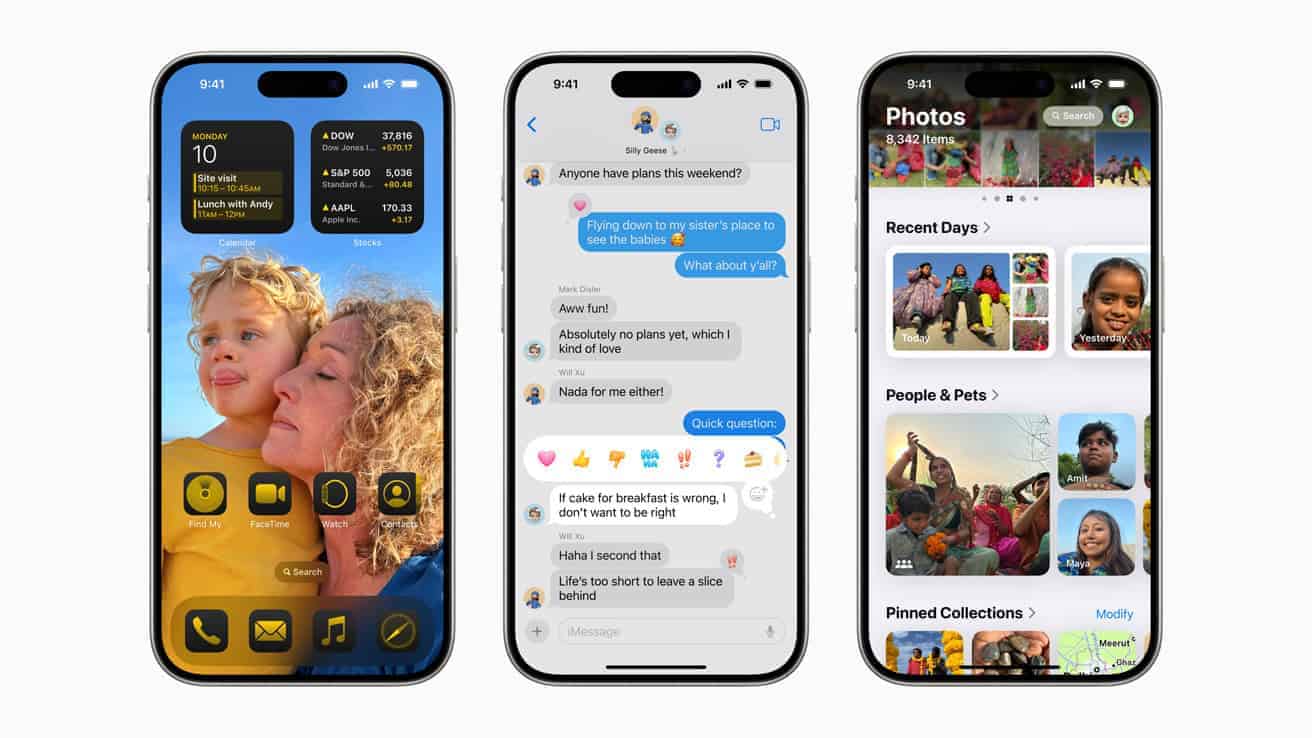If you’re experiencing issues with Screen Time on iOS 18—such as inaccurate usage reports, limits not working, or crashes—here’s a step-by-step guide to help you resolve the problem:
1. Restart Your iPhone
- Press and hold the Power button until the slider appears.
- Slide to power off.
- Wait a few seconds, then press and hold the Power button again until the Apple logo appears.
A simple restart often clears minor glitches affecting Screen Time functionality.
2. Toggle Screen Time Off and On
- Open Settings.
- Tap Screen Time.
- Scroll down and tap Turn Off Screen Time.
- Confirm and wait a moment.
- Then, turn Screen Time back on and set it up again.
This refresh can fix bugs causing incorrect tracking or limits not applying properly.
3. Check for iOS Updates
- Go to Settings > General > Software Update.
- If an update is available, download and install it.
Apple frequently releases patches to fix bugs like Screen Time glitches.
4. Set App Limits Manually
- Open Settings > Screen Time > App Limits.
- Add or adjust limits for specific apps or categories.
- Verify if the limits now work as expected.
Sometimes reapplying limits helps reset the tracking mechanism.
5. Use iOS System Recovery Tools
If the problem persists, consider using a professional iOS system recovery tool to fix underlying system bugs without data loss. These tools can repair iOS glitches that cause Screen Time malfunctions.
6. Remove or Reset Screen Time Passcode (if applicable)
If you suspect the Screen Time passcode is causing issues (e.g., limits being bypassed), you can remove or reset it using specialized software designed to unlock Screen Time without data loss.
Additional Tips
- If you notice Screen Time shows usage during hours you’re asleep or when the phone is off, this is a known bug reported by users after updating to iOS 18. The above steps usually help resolve this issue.
- If none of these solutions work, you might consider downgrading to a previous stable iOS version until Apple releases a fix.
Following these steps should help you fix the Screen Time glitch on iOS 18 and restore accurate tracking and limits.
How Are Kids Hacking Screen Time
Kids today have found clever ways to bypass Apple Screen Time limits. Many parents set up these controls to manage how much time their children spend on devices, only to discover their tech-savvy kids are still using apps during restricted times. Children as young as 13 are using simple tricks like asking for “one more minute” or finding technical loopholes to get around parental controls completely. Parents across forums on Apple Discussions and Reddit report their kids somehow accessing blocked apps during downtime.
These bypass methods range from simple to complex. Some kids repeatedly tap the “one more minute” option, while others have found more technical workarounds. Parents often feel frustrated when they discover these hacks, especially after thinking they had set up strong digital boundaries. The tricks kids use show how quickly they adapt to and overcome the limits parents try to set.
Key Takeaways
- Kids bypass Screen Time limits using both simple tricks like “one more minute” requests and more advanced technical workarounds.
- Parents need to stay updated on the latest Screen Time hacks to maintain effective digital boundaries.
- Regular talks with children about healthy tech use works better than relying solely on parental control features.
Understanding Screen Time and Its Purpose
Screen Time features help parents monitor and limit device usage for their children. These tools aim to create healthy tech habits while protecting kids from harmful content.
Defining Screen Time
Screen Time refers to digital tools built into devices that track and limit how long someone uses apps and websites. On Apple devices, it shows detailed reports of daily and weekly usage patterns.
Parents can set up Screen Time to:
- Block certain apps
- Set time limits
- Schedule “downtime” when devices can’t be used
- Restrict content by age rating
These controls were created to help keep children safe online and teach them balanced tech habits. They work by tracking app usage and enforcing the rules set by parents.
Kids often view Screen Time as a barrier rather than a helpful tool. This difference in perspective creates tension in many families. The feature is found in Settings on iOS devices and in similar forms on Android and other platforms.
The Role of Parental Controls
Parental controls give adults oversight of children’s digital activities. They help create boundaries in a world where devices are always available.
The main goals of parental controls include:
- Protecting children from inappropriate content
- Teaching responsibility with technology
- Balancing online and offline activities
Many parents use these tools to gradually introduce children to digital freedom. As kids demonstrate responsible behavior, parents can loosen restrictions.
Effective use of parental controls requires open communication. When children understand the reasons behind limits, they’re less likely to try bypassing them. Parents should explain that controls exist for safety, not punishment.
Some families create “digital contracts” that outline expectations for device usage. These agreements help children feel included in decisions about their screen time.
The Impact of Screen Time on Mental Health
Too much screen time can affect children’s mental wellbeing in several ways. Research shows links between excessive device use and sleep problems, anxiety, and attention issues.
When kids spend hours on social media or games, their brains release dopamine—a feel-good chemical that can create unhealthy reward patterns. This might explain why many children become upset when devices are taken away.
Screen time often replaces:
- Physical activity
- Face-to-face social interactions
- Creative play
- Reading paper books
These activities are crucial for healthy development. Studies show that children who spend more than 4-5 hours daily on devices have higher rates of depression symptoms.
However, not all screen time is harmful. Educational content and video calls with distant family members can be beneficial. The key is finding balance and teaching children to use technology mindfully rather than mindlessly.
How Kids Are Bypassing Screen Time Limits
Children are finding clever ways to get around parental controls on their devices. They use simple tricks like turning off devices, asking Siri for help, and sharing tips with friends online.
Common Hacking Methods Used by Kids
Many kids have discovered that simply turning off their phones can bypass Screen Time restrictions. When they power the device back on, they often gain temporary access before limits kick in again. This simple method requires no technical skills.
Another common trick involves using Siri to send messages. Even when the Messages app is blocked, kids can ask Siri to send texts by voice, completely avoiding the app restriction.
Some tech-savvy children change the date and time settings on their devices. This confuses the Screen Time system, making it think the restricted period hasn’t started yet.
Kids also share hacking methods with friends and through online forums. They exchange tips about finding glitches in the latest updates that parents might not know about.
The Use of Social Media to Bypass Limits
Social media platforms often have web versions that aren’t covered by app restrictions. Kids can access Instagram or TikTok through web browsers when the apps are blocked.
They also use lesser-known alternative apps that serve similar functions to restricted ones. If Snapchat is blocked, they might use a messaging app with similar features that isn’t on their parents’ radar.
Some children create secondary accounts on devices not monitored by parents. These “burner” accounts allow them to chat and browse freely without detection.
Many kids have discovered that notification previews can be used to read messages without actually opening restricted apps. This loophole lets them stay connected even during downtime periods.
Gaming and Its Role in Screen Time Hacking
Gaming platforms often have chat features that function like social media. Kids blocked from traditional social apps may use gaming chats to communicate with friends instead.
Some games have web versions that can be accessed through browsers when the app version is restricted. This allows continued play despite limits being in place.
Children sometimes find workarounds by using game streaming services. These might not be categorized as “games” in Screen Time settings, creating a loophole.
Parents often focus on restricting obvious gaming apps but miss browser-based games. Kids quickly find these alternatives when their regular games are blocked.
Game launchers sometimes don’t register as gaming time in Screen Time monitors. This technical oversight allows kids to play for hours while the system thinks they’re using a different app category.
Technical Vulnerabilities and Workarounds
Kids have found several clever ways to bypass Apple’s Screen Time limits through system bugs, account manipulation, and password tricks. Parents should be aware of these technical loopholes to better protect their children’s digital well-being.
iOS 12 and Subsequent Versions
When Apple first released Screen Time with iOS 12, children quickly discovered multiple workarounds. One common trick involves using the App Store to reinstall previously deleted apps when time limits kick in. This allows kids to reset the timer on specific applications.
Another method exploits the clock settings. By manually changing the device time or date, some children can trick the system into allowing more screen time than permitted.
With iOS updates, Apple has patched many vulnerabilities, but new ones continue to emerge. Some tech-savvy kids use the screen recording feature to capture parent passcodes when they’re entered to extend time limits.
The notification response feature also presents a loophole. Children can respond to messages through notifications even when the app is locked, allowing continued communication beyond set limits.
Exploiting Family Share Features
Family Sharing features, while designed to connect Apple users within households, contain several vulnerabilities that children exploit. Kids have discovered they can create secondary Apple IDs unknown to parents and switch between accounts to bypass restrictions.
Some children use the “Ask for More Time” feature repeatedly, sending multiple requests that can overwhelm or annoy parents into granting access. This social engineering tactic takes advantage of parental fatigue.
The Screen Time passcode recovery process presents another weakness. Children can initiate passcode resets by claiming they’ve forgotten the code, potentially gaining administrator access if parents aren’t careful with verification steps.
Family purchase sharing also creates opportunities for workarounds. Kids might download unrestricted apps on a family member’s device first, making them available on their own device without triggering permission requests.
Apple ID and Password Vulnerabilities
Password security represents one of the biggest weaknesses in Screen Time controls. Many teens have discovered their parents’ passcodes by watching them enter the code or guessing common combinations like birthdays or anniversaries.
Some children use the “Forgot Password” option to intercept reset emails, particularly if they have access to the parent’s email account. This gives them complete control over Screen Time settings.
Third-party password management apps can also be exploited. If parents store Screen Time passcodes in password managers that children can access, kids may find and use these credentials.
Factory resets remain the nuclear option. Tech-savvy teens know they can back up their data, perform a factory reset that removes all restrictions, and then restore their content while keeping Screen Time disabled.
Children sometimes bypass restrictions by using web versions of blocked apps, accessing similar content through Safari when individual apps are limited.
Parental Strategies to Set Effective Limits
Effective screen time management requires both technical solutions and thoughtful parenting approaches. Parents need tools and techniques that work in real-world situations where children are increasingly tech-savvy.
Creating a Balance Between Control and Trust
Finding the right balance between monitoring your child’s device usage and building trust is crucial. Too much control can lead kids to find ways around parental controls, while too little guidance leaves them vulnerable online.
Start by having open conversations about why screen time limits exist. Explain they’re not punishments but protections for their health and development.
Consider age-appropriate freedom. Younger children need stricter limits, while teens can gradually earn more independence as they demonstrate responsibility.
Create tech-free zones and times in your home, such as during meals or an hour before bedtime. This helps establish healthy boundaries without relying solely on digital restrictions.
Involve kids in setting some of their own limits. When children participate in creating rules, they’re more likely to follow them and less motivated to find workarounds.
How to Establish and Enforce Screen Time Rules
Set clear, consistent rules that everyone understands. Write them down and post them where the family can see them.
Sample Family Screen Time Rules:
- Devices off during meals and homework time
- No screens in bedrooms after 9 PM
- Complete chores and homework before recreational screen time
- 1-hour screen time limit for weekdays, 2 hours on weekends
Use natural consequences when rules are broken. If a child bypasses screen time limits, consider restricting device access for a day.
Be a good role model. Children notice when parents follow different rules than they set for their kids.
Regularly review and adjust rules as children grow. What works for an 8-year-old won’t be appropriate for a 15-year-old.
Praise compliance and responsible device use to reinforce positive behavior.
Utilizing Advanced Parental Control Features
Today’s parental control tools offer sophisticated options beyond simple time limits. Learn to use these features effectively to stay ahead of tech-savvy kids.
Enable content filtering to block inappropriate websites and apps based on age ratings. Review these settings regularly as children mature.
Use location tracking thoughtfully—not as surveillance but for safety. Discuss with children how and why you’ll use this feature.
Consider app-specific limits rather than blanket restrictions. Allow more time for educational apps and less for games or social media.
Disable the ability to change time zones on devices, as this is a common way kids try to trick time-based restrictions.
Set up downtime schedules that align with your family routine, such as during school hours, dinner time, and before bed.
Regularly check usage reports to spot unusual patterns that might indicate attempts to circumvent Screen Time Limits.
Frequently Asked Questions
Parents often struggle to keep up with the many ways kids find to get around screen time limits. These questions address common concerns about bypassing restrictions and understanding screen time impacts.
What methods are children using to circumvent Screen Time restrictions on iOS devices?
Kids have found several clever ways to bypass iOS Screen Time limits. One common method is simply turning off the phone, which often grants temporary access when powered back on.
Some children use the time zone trick. By changing the device’s time zone, they can fool the system into giving more screen time than allowed.
Another tactic is using the “Ask for More Time” feature repeatedly. Kids also try redownloading apps that have been limited, which sometimes resets the restrictions.
How can Screen Time be turned off on an iPhone without the password?
Without the Screen Time password, children sometimes use the factory reset option. This drastic step erases all content but also removes Screen Time limits.
Some kids have found that turning off Screen Time can be done from a parent’s device if they gain access to it. They simply go to Settings > Screen Time > Child’s Name.
Using a family member’s Face ID or Touch ID while they’re sleeping has also been reported as a method for accessing Screen Time settings.
What are the steps to bypass Screen Time limits on Android devices?
On Android, some children use Guest Mode to avoid restrictions. When they switch to a guest account, the Screen Time limits often don’t apply.
Kids may also install third-party launchers that don’t respect the screen time settings of the default launcher. These alternative interfaces can provide access to apps that should be restricted.
Some tech-savvy children use debugging tools to disable parental controls. This requires connecting to a computer and using developer commands.
Why are children able to bypass Screen Time settings on the iPhone 11?
The iPhone 11 has specific vulnerabilities in earlier iOS versions. These gaps let kids find ways around the restrictions that weren’t fixed until later updates.
Some iPhone 11 users reported that children could hack Screen Time by using a glitch in the messaging system. This allowed access to contacts that should have been restricted.
The issue stems partly from how Screen Time was implemented on these devices. Apple has since improved security with updates, but many parents don’t install them promptly.
Can Screen Time be hazardous to children’s well-being, and if so, how?
Too much screen time can disrupt sleep patterns. The blue light from screens makes it harder for kids to fall asleep when used before bedtime.
Extended screen use is linked to less physical activity. When children spend hours on devices, they miss chances to play outside or exercise.
Some studies show that excessive screen time may affect attention spans. Children who have unlimited screen access sometimes struggle to focus on non-digital tasks like reading books or classroom learning.
Is there a way to unlock Screen Time if the password is forgotten?
Apple provides an official recovery method using your Apple ID. Parents who forgot their Screen Time password can reset it through the Settings app on their iPhone.
For serious situations, contacting Apple Support can help. They have protocols to verify your identity and assist with regaining access to Screen Time settings.
As a last resort, a device reset will remove all Screen Time restrictions. However, this also erases all data on the phone, so backing up important information first is crucial.







